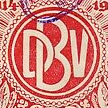
Gosbank was the central bank of the Soviet Union and the only bank in the entire country from 1922 to 1991. Gosbank was one of the three Soviet economic authorities, the other two being "Gosplan" and "Gossnab". The Gosbank closely collaborated with the Soviet Ministry of Finance to prepare the national state budget.

Max Taut was a German architect of Prussian Lithuanian heritage.

The Norwegian Union of General Workers is a trade union in Norway. It has a membership of 33,000 and is affiliated with the Norwegian Confederation of Trade Unions (LO).
The People's Commissariat of the Workers' and Peasants' Inspection, also known as Rabkrin, was a governmental establishment in the Soviet Union of ministerial level that was responsible for scrutinizing the state, local and enterprise administrations.
Heinrich Brandler was a German communist, trade unionist, politician, revolutionary activist, and political writer. Brandler is best remembered as the head of the Communist Party of Germany (KPD) during the party's ill-fated "March Action" of 1921 and aborted uprising of 1923, for which he was held responsible by the Communist International. Expelled from the Communist Party in December 1928, Brandler went on to become co-founder of the Communist Party of Germany Opposition, the first national section of the so-called International Right Opposition.
The General German Trade Union Federation was a confederation of German trade unions in Germany founded during the Weimar Republic. It was founded in 1919 and was initially powerful enough to organize a general strike in 1920 against a right-wing coup d'état. After the 1929 Wall Street crash, the ensuing global financial crisis caused widespread unemployment. The ADGB suffered a dramatic loss of membership, both from unemployment and political squabbles. By the time the Nazis seized control of the government, the ADGB's leadership had distanced itself from the Social Democratic Party of Germany (SPD) and was openly cooperating with Nazis in an attempt to keep the organization alive. Nonetheless, on May 2, 1933, the SA and SS stormed the offices of the ADGB and its member trade unions, seized their assets and arrested their leaders, crushing the organization.
The Revolutionäre Gewerkschafts Opposition was the Communist union in Germany during the Weimar Republic. It went underground after the Nazi Party seized control of the government and continued operating until it was crushed by the Nazis in 1935.

The Building and Construction Trades Department, commonly known as North America's Building Trades Unions (NABTU), is a trade department of the American Federation of Labor and Congress of Industrial Organizations (AFL–CIO) with 14 affiliated labor unions in the building trades. It was originally founded by the American Federation of Labor in 1907.
The German Tobacco Workers' Union was a trade union representing people in the tobacco manufacturing industry in Germany.

The German Clothing Workers' Union was a trade union representing people involved in making clothing in Germany.

The German Agricultural Workers' Union was a trade union representing agricultural and forestry workers in Germany.
The Central Union of Stone Workers of Germany was a trade union representing stone masons in Germany.
Central Union of Roofers was a trade union representing roofers in Germany.
The German Leather Workers' Union was a trade union representing workers involved in tanning and glovemaking.

The German Construction Workers' Union was a trade union representing building workers in Germany.
The Central Union of Bakers and Confectioners was a trade union representing workers in bakeries and related trades in Germany.

The German Furriers' Union was a trade union representing fur workers in Germany.
The Central Union of Masons was a trade union representing bricklayers in Germany.
The Central Union of Construction Workers was a trade union representing building labourers in Germany.
The Central Union of Potters was a trade union representing pottery workers in Germany.








